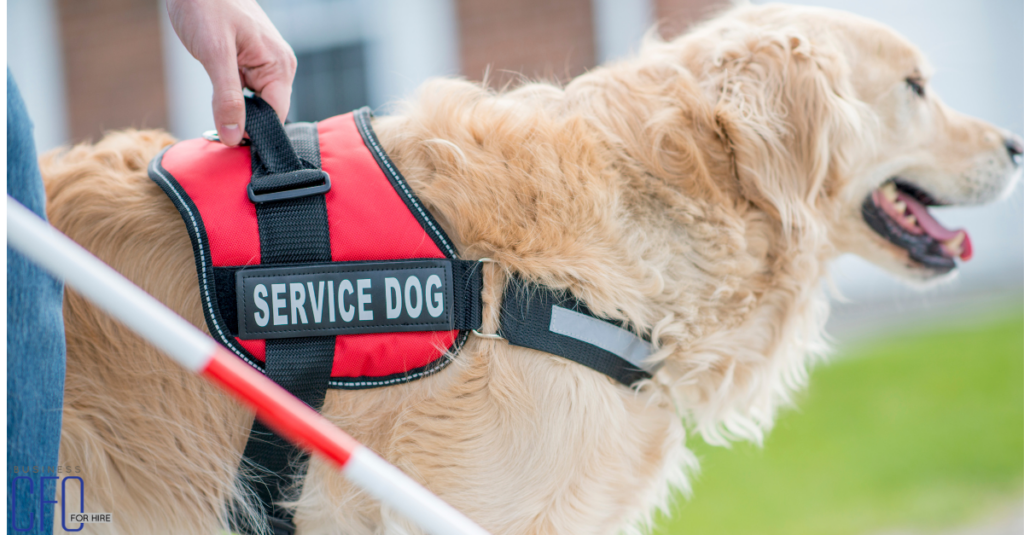Yes—Under the Right Conditions

Emotional Support Animals (ESA) vs. Service Animals
Owning a service animal or emotional support animal (ESA) can come with significant expenses—vet visits, specialized training, food, and supplies can add up fast. But here’s the good news: in some cases, these costs may be tax deductible. Whether it’s a dog trained to detect seizures or an emotional support animal prescribed for anxiety, the IRS does allow deductions under certain circumstances.
Understanding the rules can help maximize potential savings. This guide breaks down the key differences between service animals and ESAs, what expenses may qualify, and how to properly document everything for tax season.
Do Emotional Support Animals Qualify for Tax Deductions?
While the IRS does not officially recognize emotional support animals as deductible on their own, some ESA-related expenses may be claimed if these conditions are met:
- A licensed mental health professional prescribes the ESA as part of a treatment plan for a diagnosed condition.
- You have an official ESA letter on professional letterhead.
- You itemize deductions using Schedule A (Form 1040).
- Total unreimbursed medical expenses (including ESA costs) exceed 7.5% of your adjusted gross income (AGI).
Potential deductible ESA expenses include:
- Veterinary care directly tied to the animal’s supportive role
- Training to improve emotional support function
- Food and supplies used for medical-related purposes
- Licensing or registration fees
Pro Tip: Keep clear records and receipts—and ensure your ESA documentation includes a diagnosis and explanation of medical necessity.
Service Animals vs. Emotional Support Animals: What’s the Difference?
Knowing the difference between service animals and ESAs is critical for tax purposes:
| Feature | Service Animal | Emotional Support Animal (ESA) |
|---|---|---|
| Definition | Trained to perform specific tasks for individuals with disabilities under ADA guidelines | Offers comfort through presence; no special training required |
| ADA Recognition | Recognized under ADA (dogs and miniature horses only) | Not recognized under ADA |
| Tasks | Performs disability-related tasks (guiding, alerting, etc.) | Provides emotional support without task-based training |
| Public Access Rights | Full public access under federal law | Limited access; subject to restrictions |
| Tax Deductibility | Clearly deductible with proper documentation | Requires proof of medical necessity for deduction |
Service animals are considered “working animals” due to their specialized training. This makes their associated costs more clearly aligned with IRS-recognized medical deductions. In contrast, ESAs must be justified through medical documentation.
What Expenses Can Be Deducted for Qualified Animals?
If all qualifications are met, these expenses can be claimed for both service animals and ESAs:
- Veterinary care linked directly to the animal’s medical role
- Training costs for specific tasks or emotional support improvement
- Food and supplies necessary for the animal’s care and role
- Licensing or registration fees
To deduct any of these costs, it’s required to itemize using Schedule A of IRS Form 1040. Taxpayers who take the standard deduction cannot claim animal-related expenses.
Proper Documentation Makes All the Difference
The key to unlocking animal tax deductions for animal-related expenses lies in the details. Having a formal ESA letter, keeping organized receipts, and understanding IRS thresholds are essential. For service animal owners, the process is more straightforward, but all claims should be backed by thorough records.
If unsure whether a pet’s expenses qualify, consulting a tax advisor can ensure nothing is missed—and every eligible dollar is claimed.
